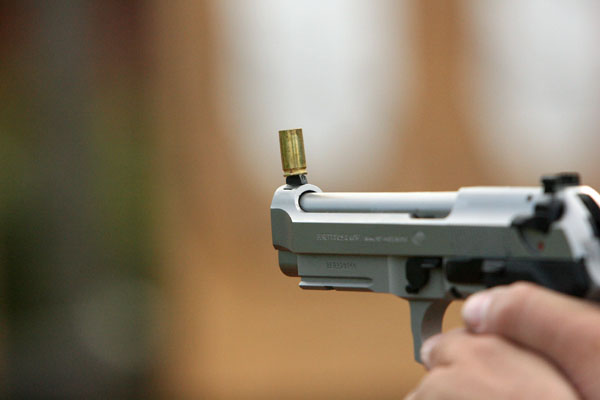My concern and sympathy for that problem is exactly zero. Someone who bases his training on an unexplained photo he found on the internet just doesn't concern me.
... 'nuff said
I don't pay attention to whether brass is in the air or not. Whether or not someone got a proper follow-through (and if appropriate, prep) is unrelated to how high the brass comes out of his gun, at what angle, and with what force. I'm not trying to sound snide -- I have a gift for doing it even without trying thoughTodd, I was kind of curious why it took so long to jump in. Thank you for your insight. Playing devils advocate, if you had a brand new shooter and you saw the same thing (finger straight along the slide before the brass drops) would you have any teaching points and what would they be??-- but your question was specific.
In a broader context, do I correct a shooter who takes his finger off the trigger too soon? Yes. The issue is determining what too soon means, because it means different things to different shooters under different circumstances engaging different targets at different ranges.
So let me play devil's advocate right back at you: if your follow-through and prep can be on a completely different target and that's ok, then would it be ok to have no follow-through or prep if you knew you were firing the last round on the last target you had to shoot?I agree on how you teach the follow through and I understand that at speed the follow up sight picture is slow, if the sight picture is on the same target. To answer your question regarding shot prep, if I'm shooting 2 shots on multiple targets my "third" sight picture will be on the next target. My eyes will lead to the target and my sights will follow. Is that how you teach shooting multiple targets??
When I talk about multiple targets, I make a clear distinction between the little things that matter when you're playing games on the range and the reality of how our eyes and brains will act under stress if we're shooting OFF the range. Multiple targets are actually easier to deal with when you take the gaming stuff out of it!
When you're shooting multiple static targets at known locations and distances, driving the gun immediately to the next target as part of your recoil recovery is certainly the right way to do it. If you have a reactive target, though (whether it's a steel plate, a balloon, or someone charging you with a knife) you're going to stay focused on that target until it no longer appears on the other side of your front sight.
That distinction, in fact, is why JW777 was right when he pointed out it was a known quantity drill in terms of targets and shots. Because while someone can say "I always prep for the next shot, what JW777 did is a bad habit!" I can just as easily counter with, "If you are constantly training yourself to reset and prep on a target/threat which is still standing unaffected by your previous shots and you stop shooting at it what you're doing is a bad habit!" Both are really pretty silly.
No worries on my end. Though it might be more appropriate if this got split off into its own separate topic in the Tactics & Training section, since (a) it doesn't really have anything to do with the Culpeper class and (b) people who might be interested in what we're discussing but have no interest in a class AAR won't know this is being discussed.As I said, I'm in this for the information sharing.





 Reply With Quote
Reply With Quote




Bookmarks